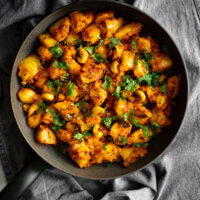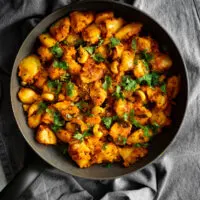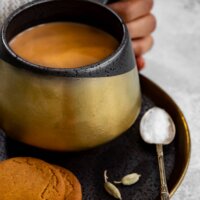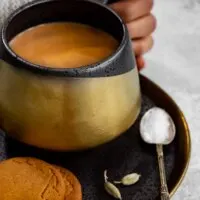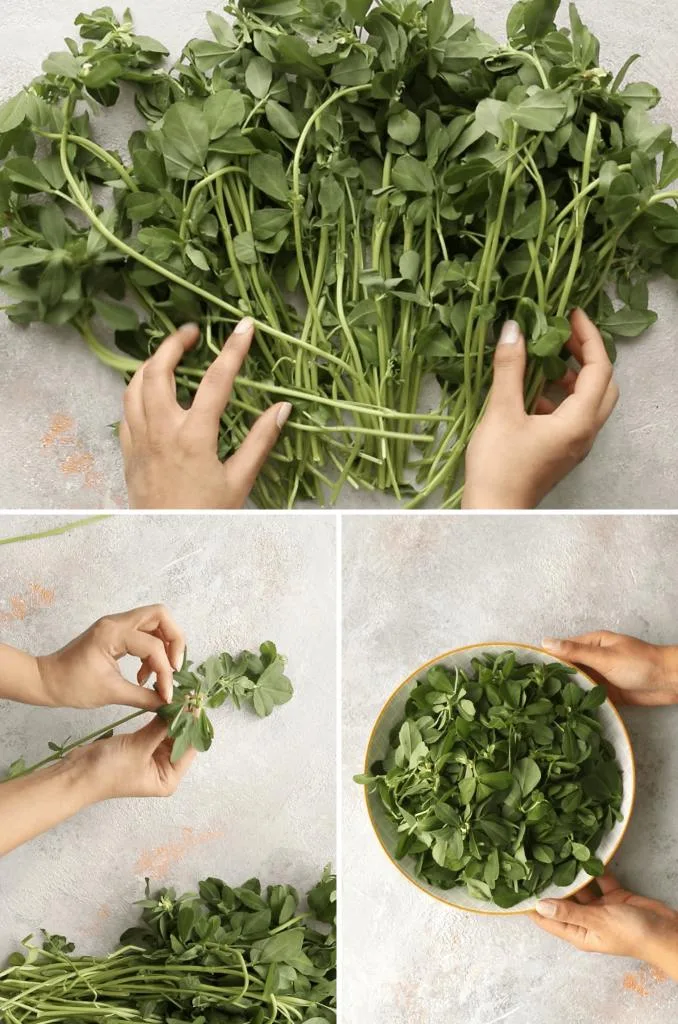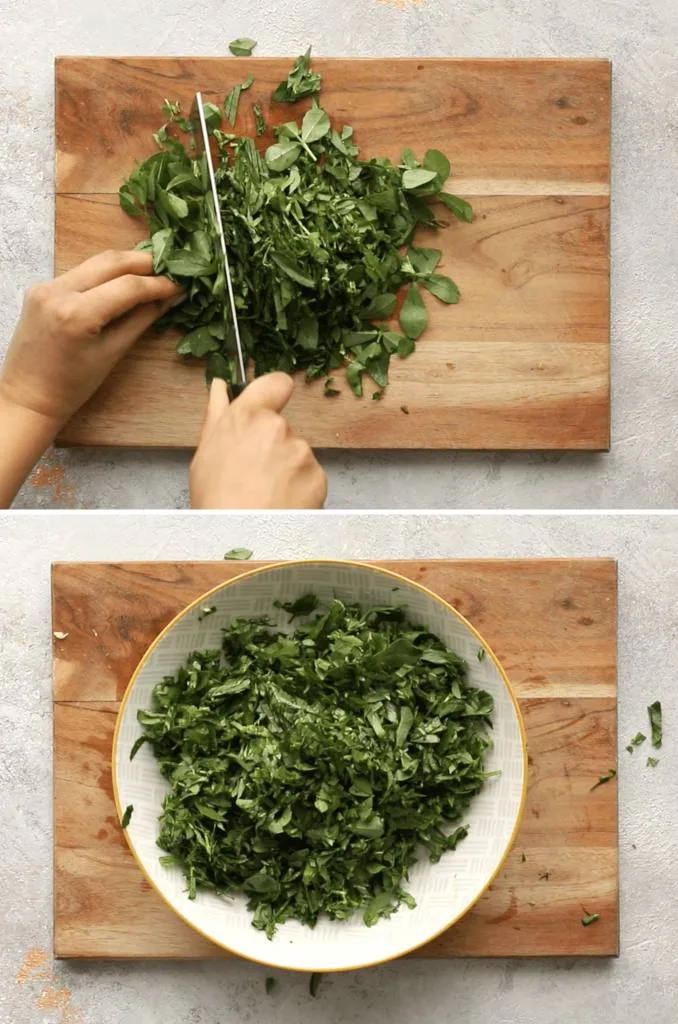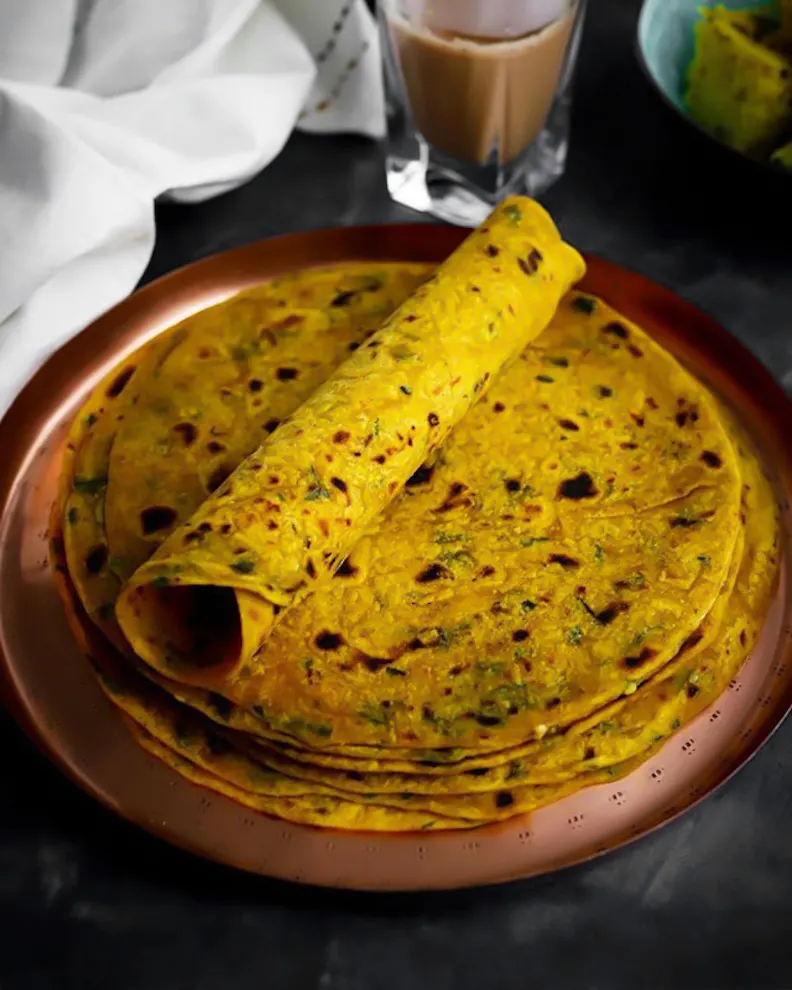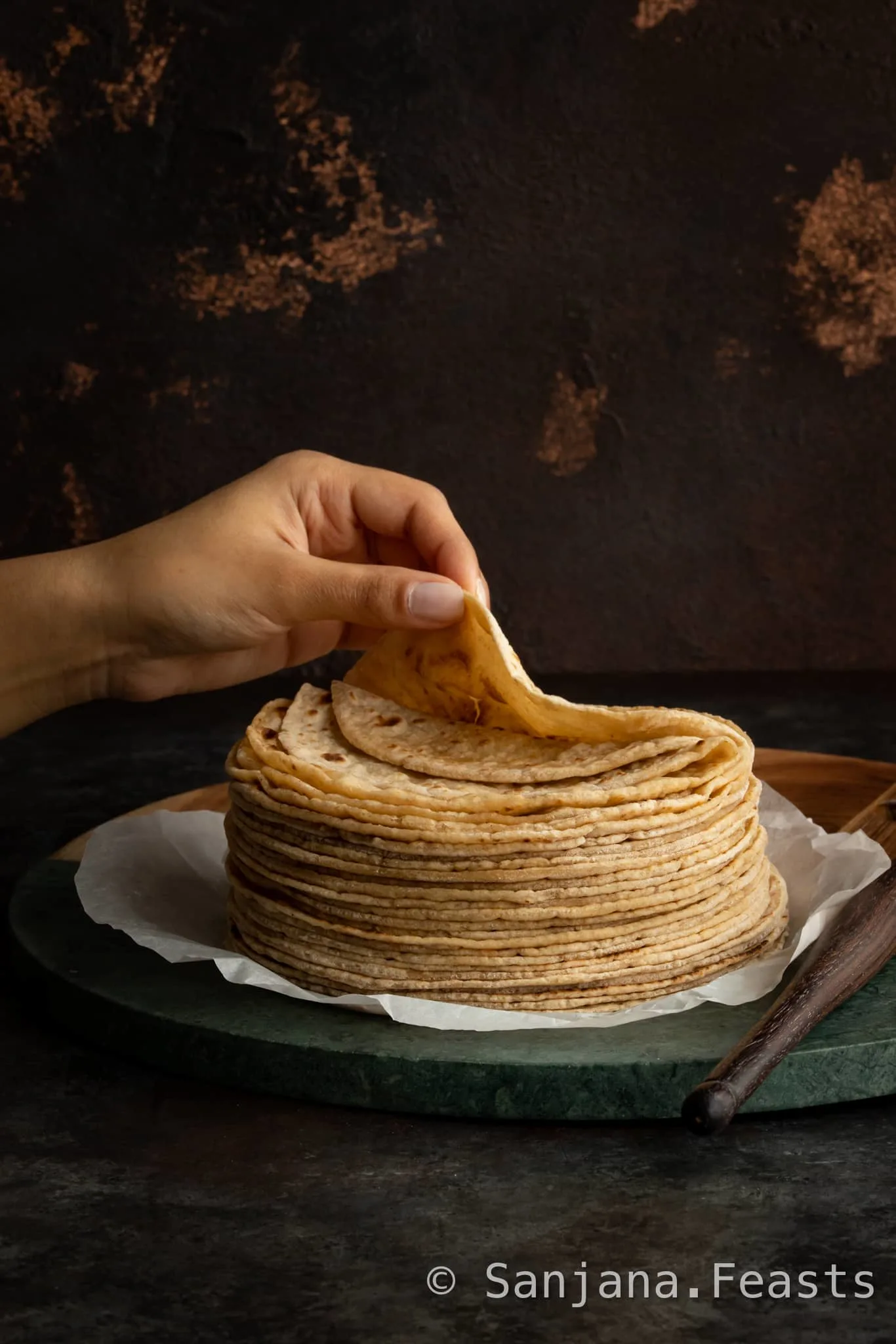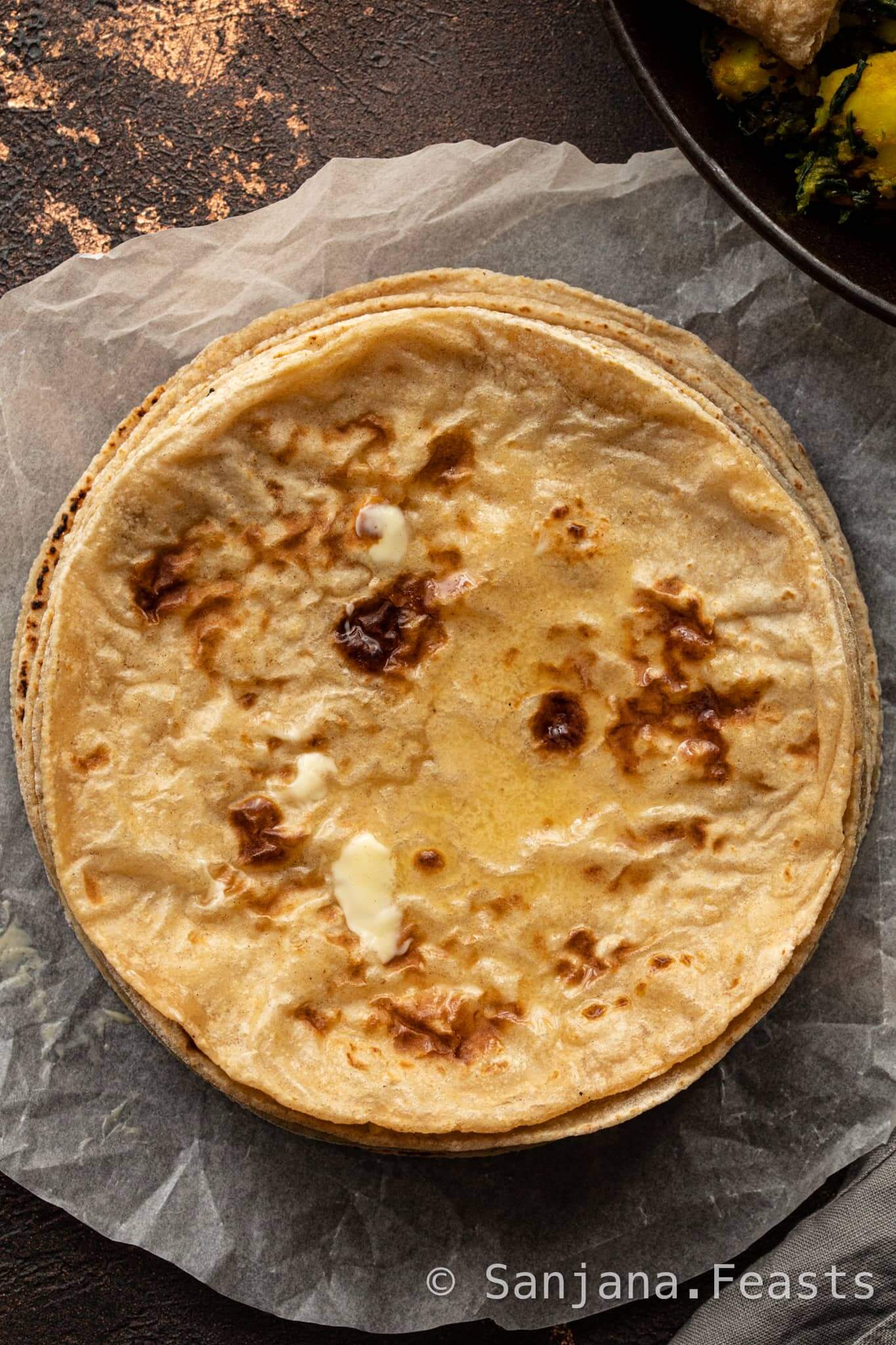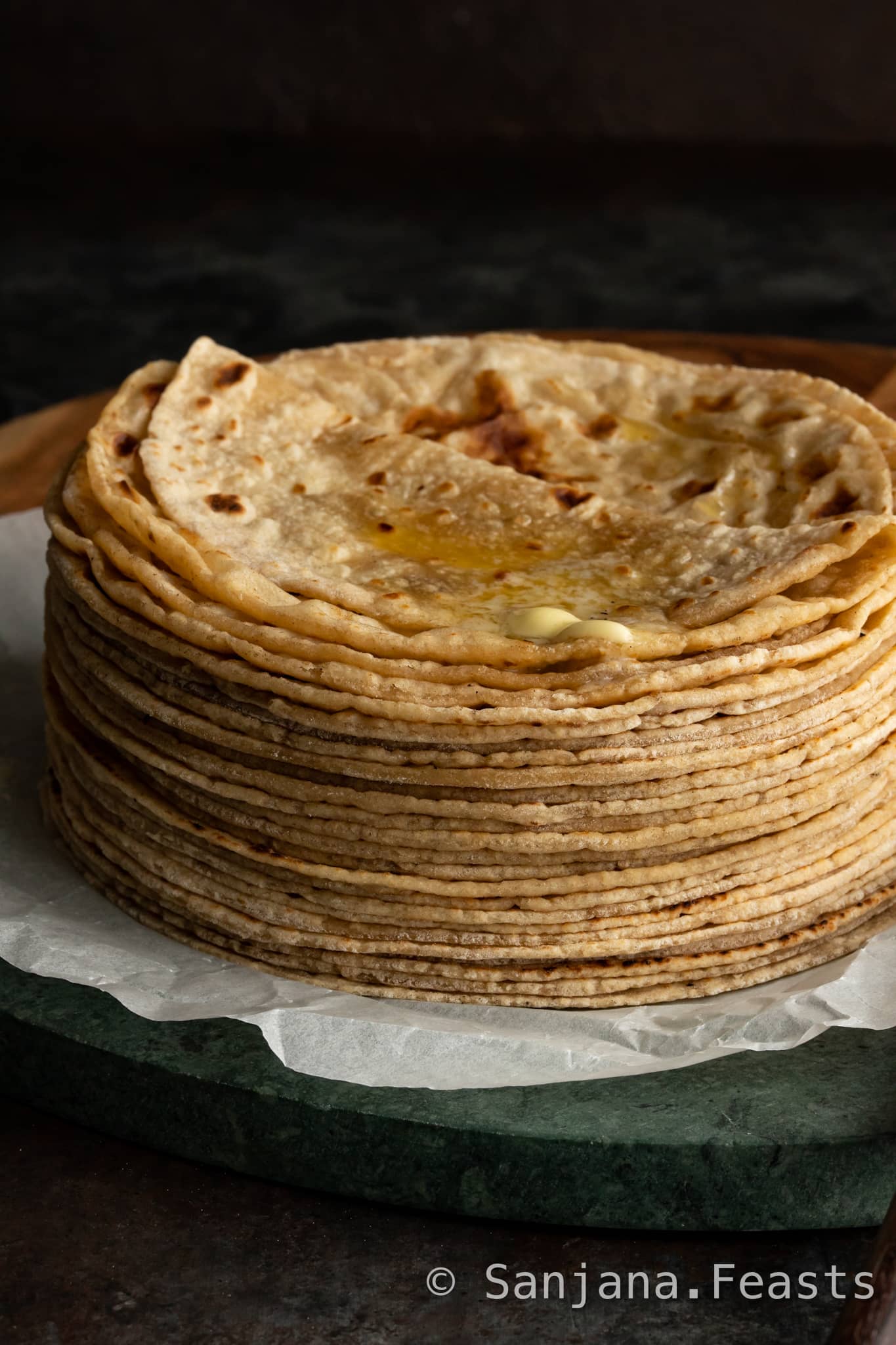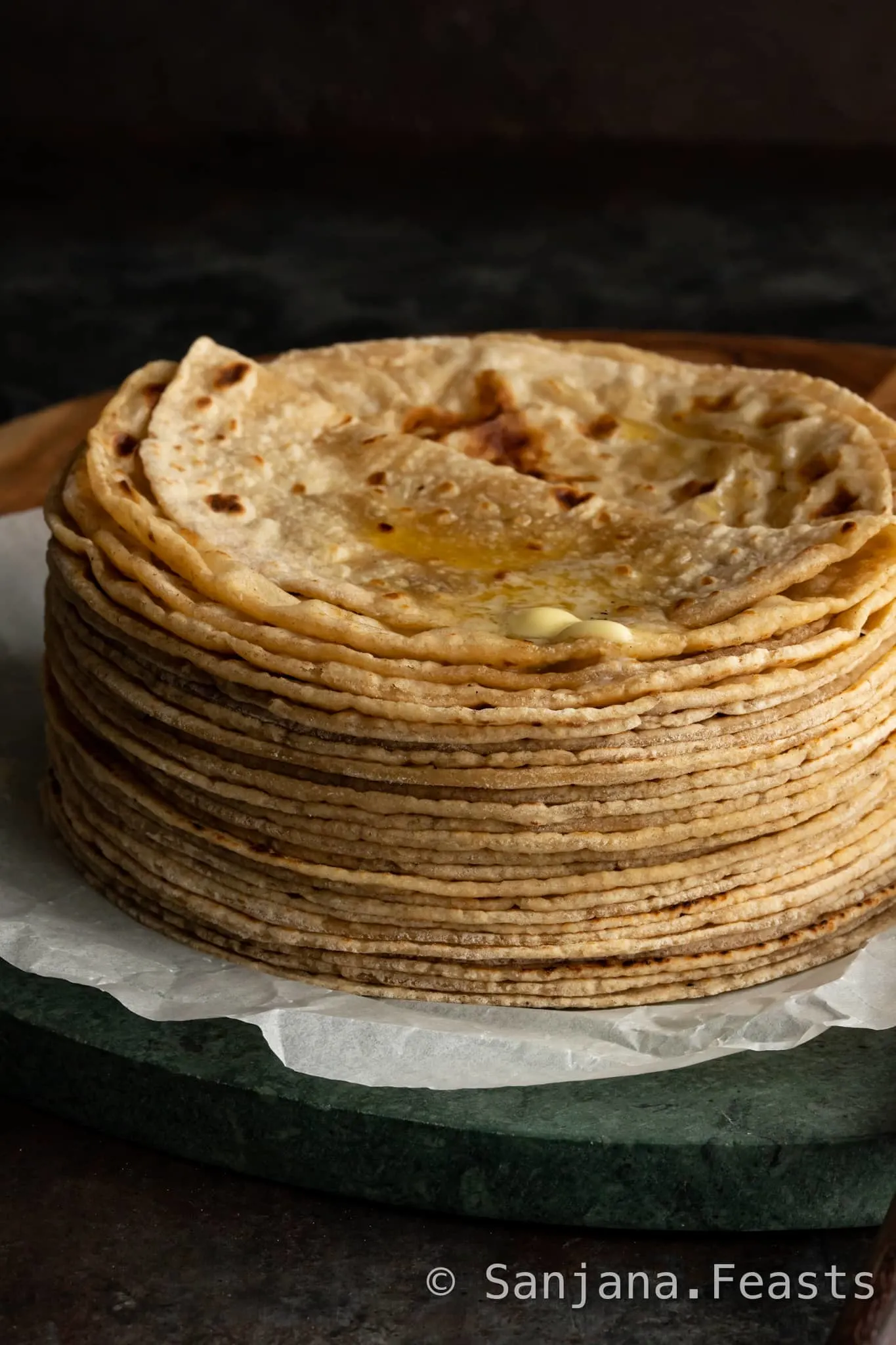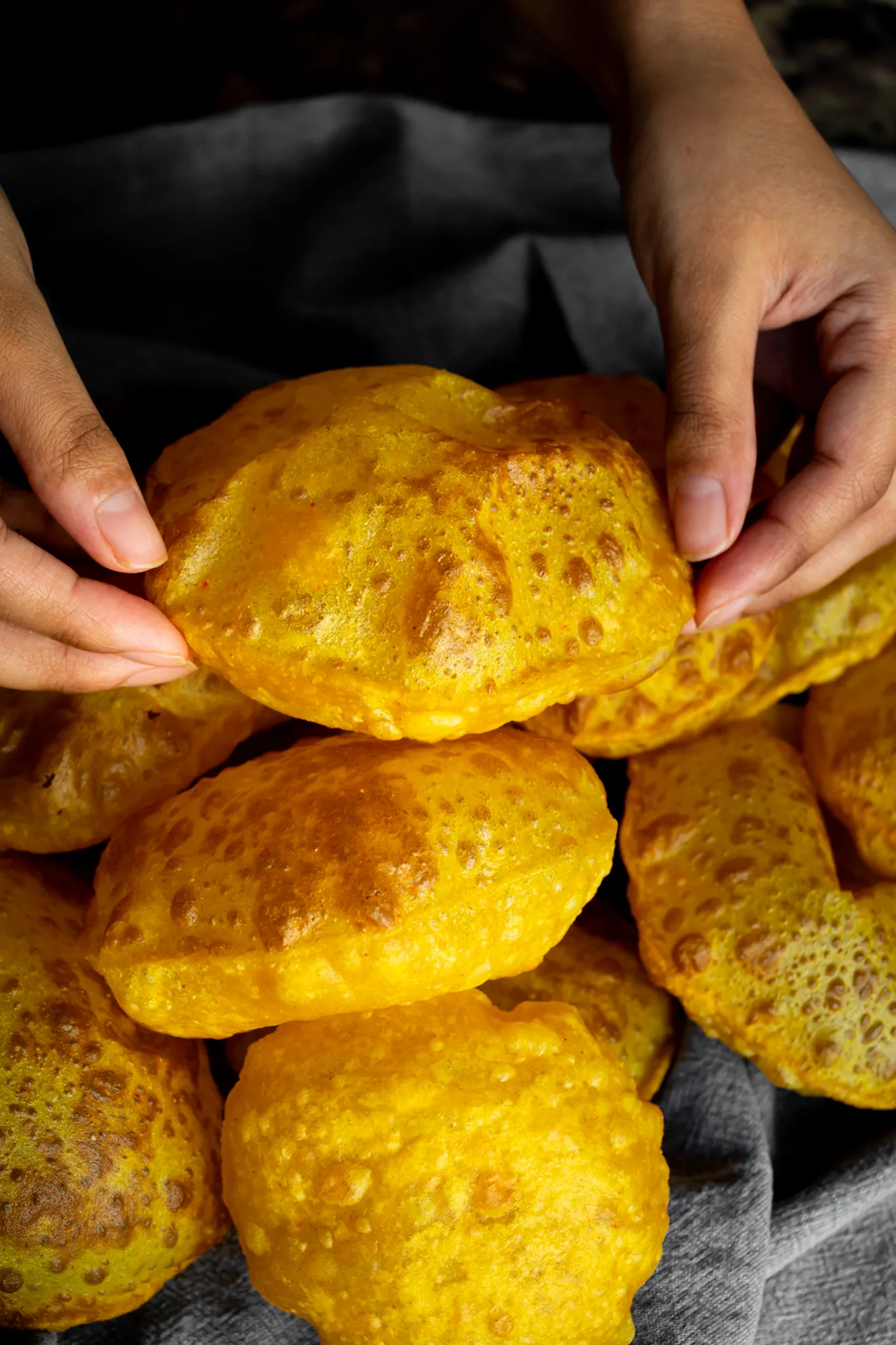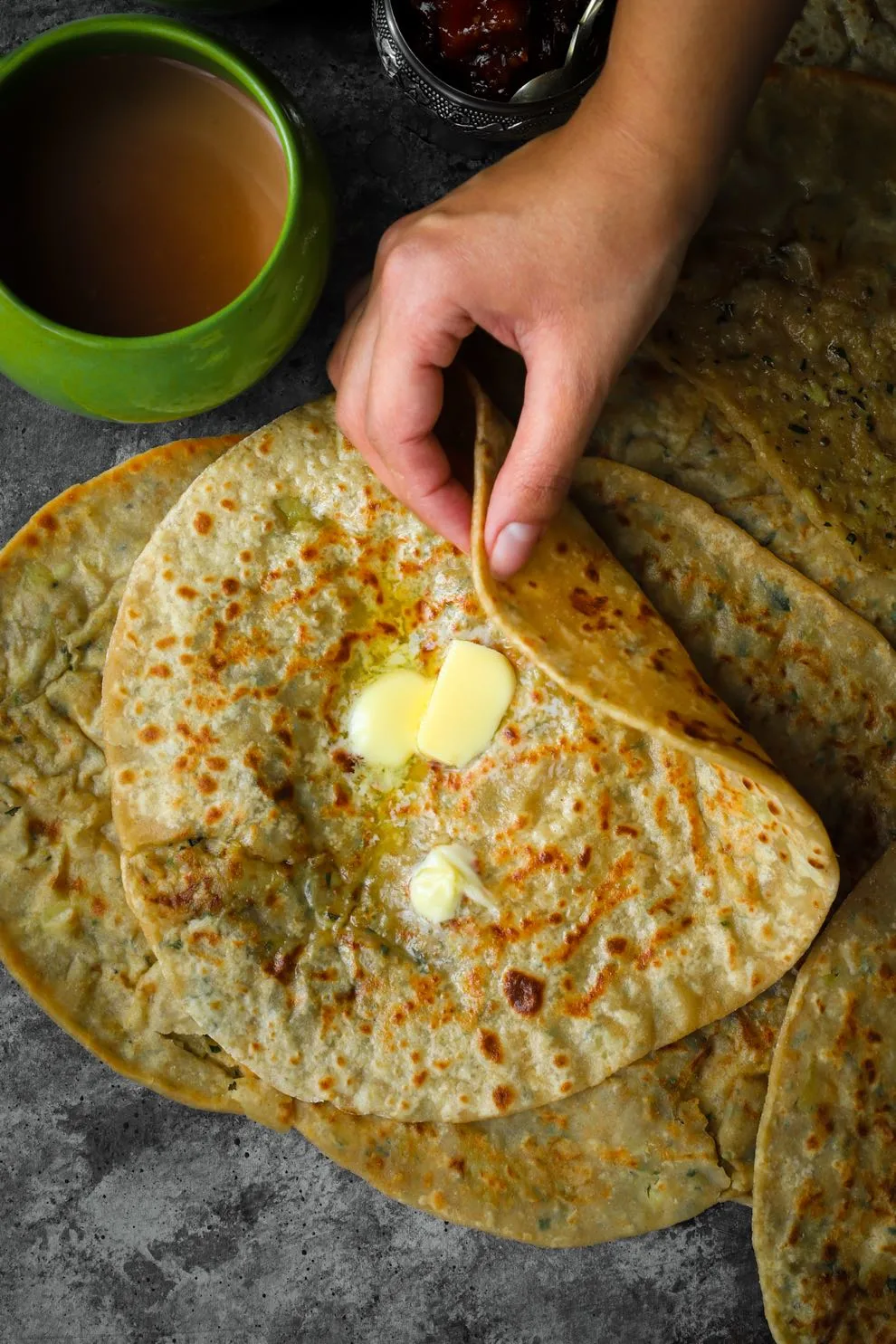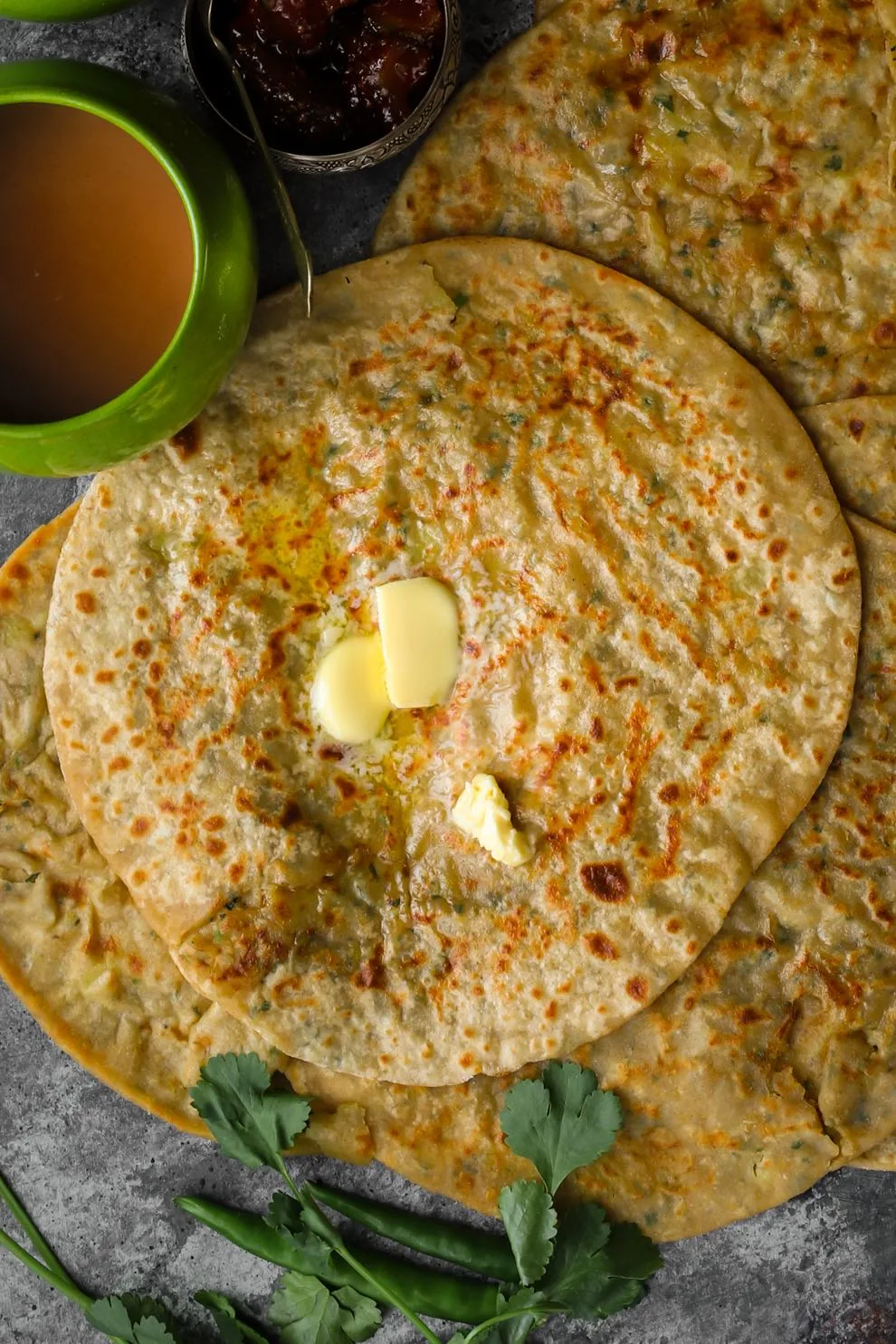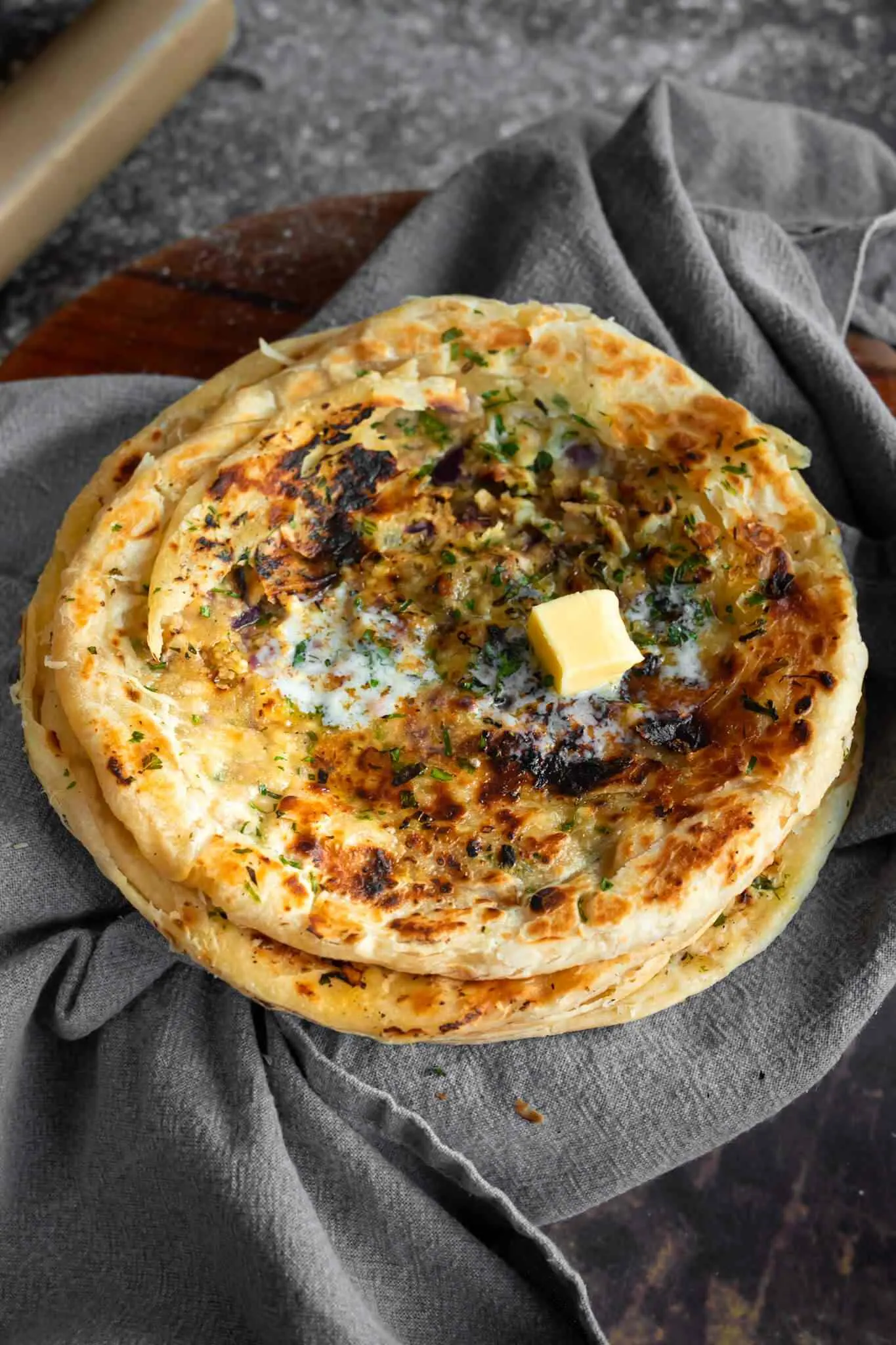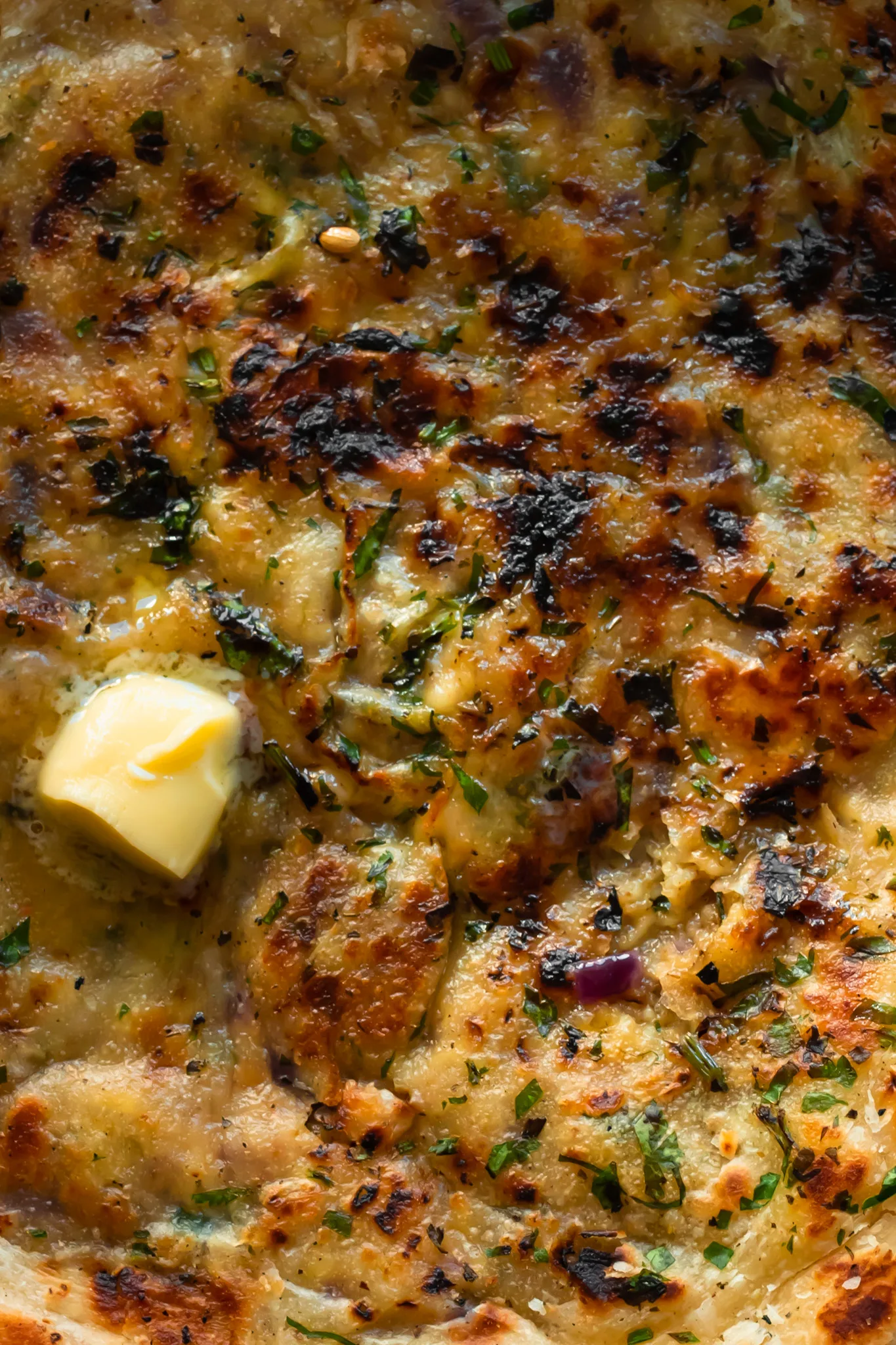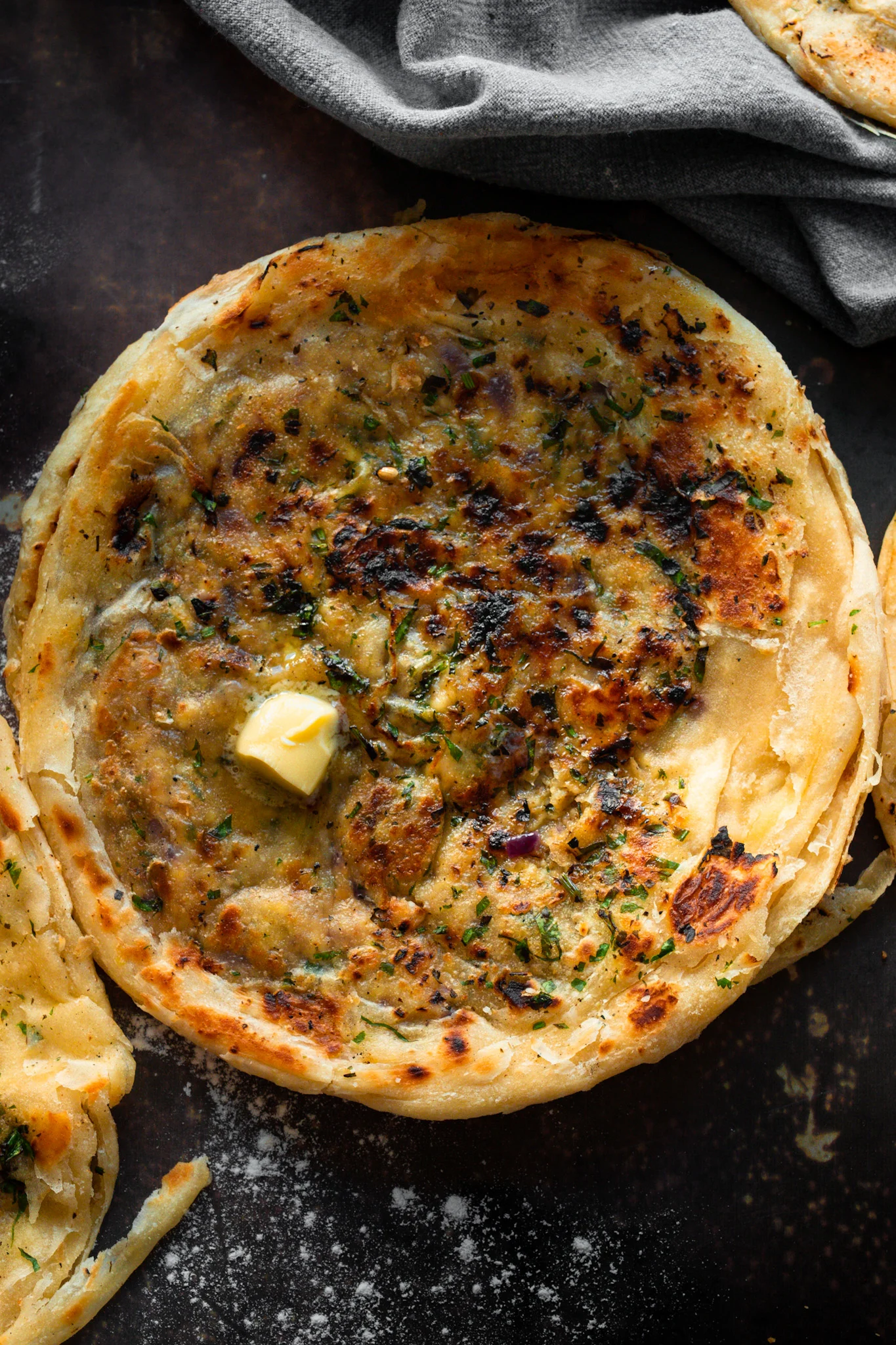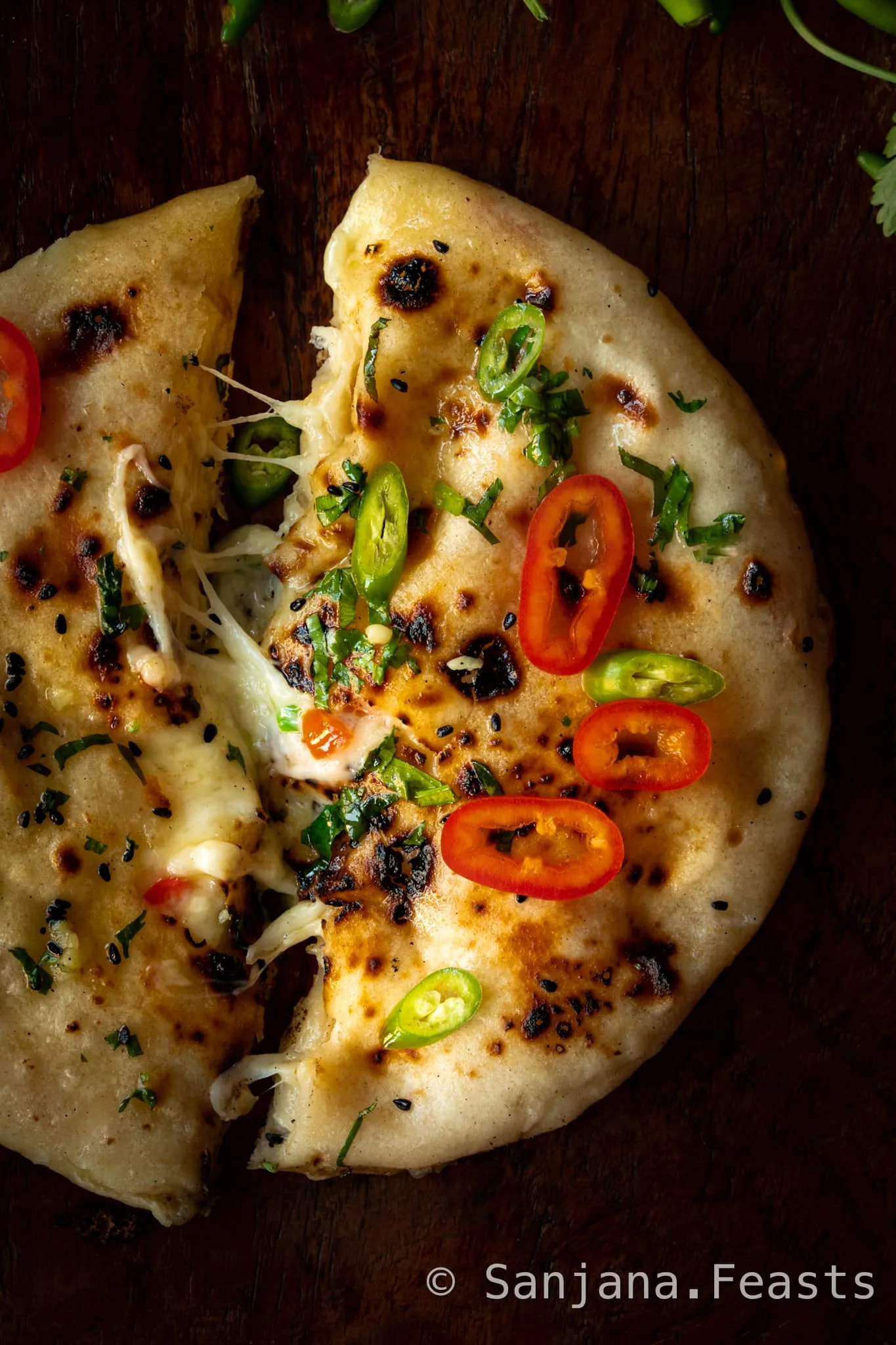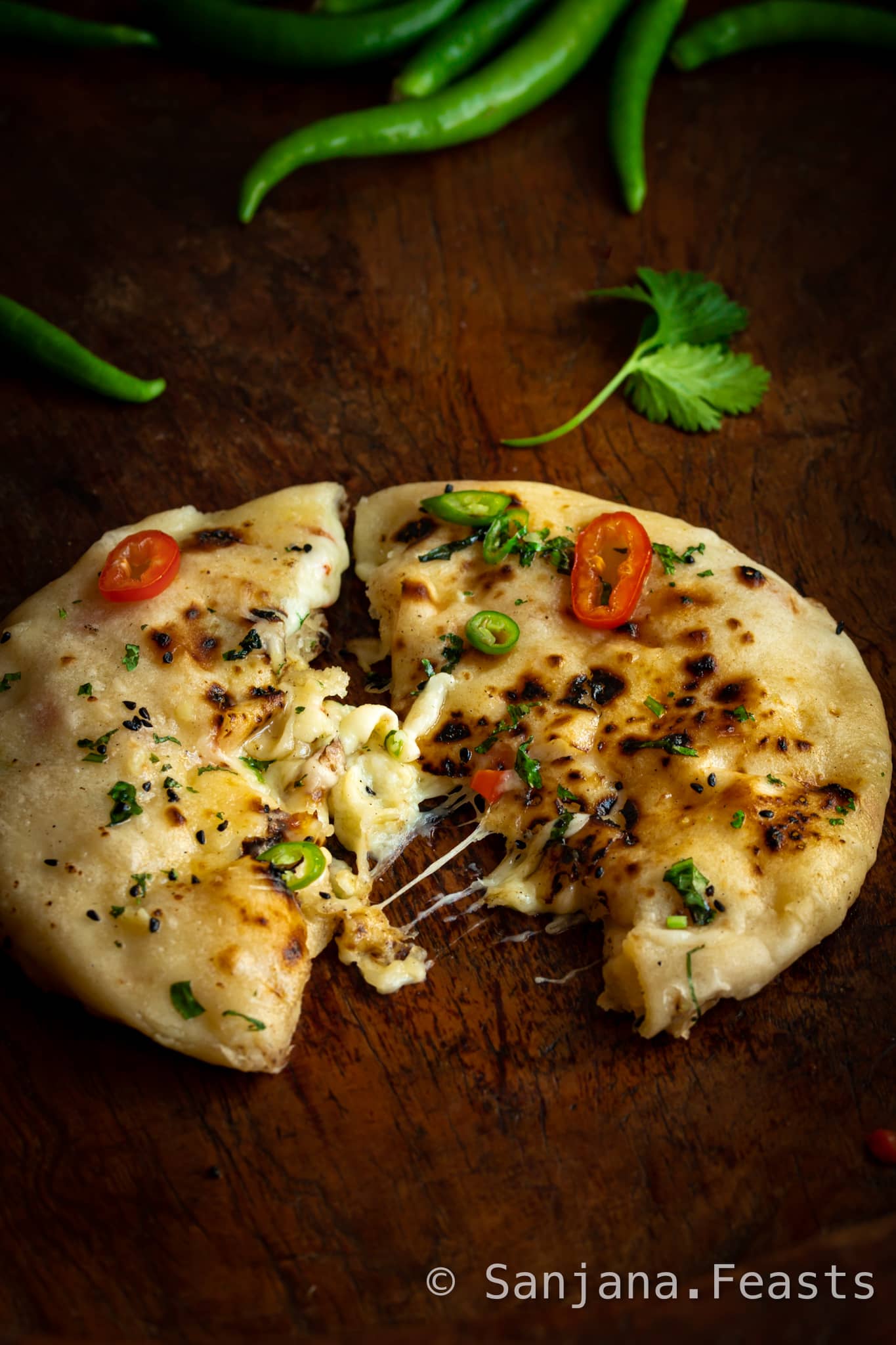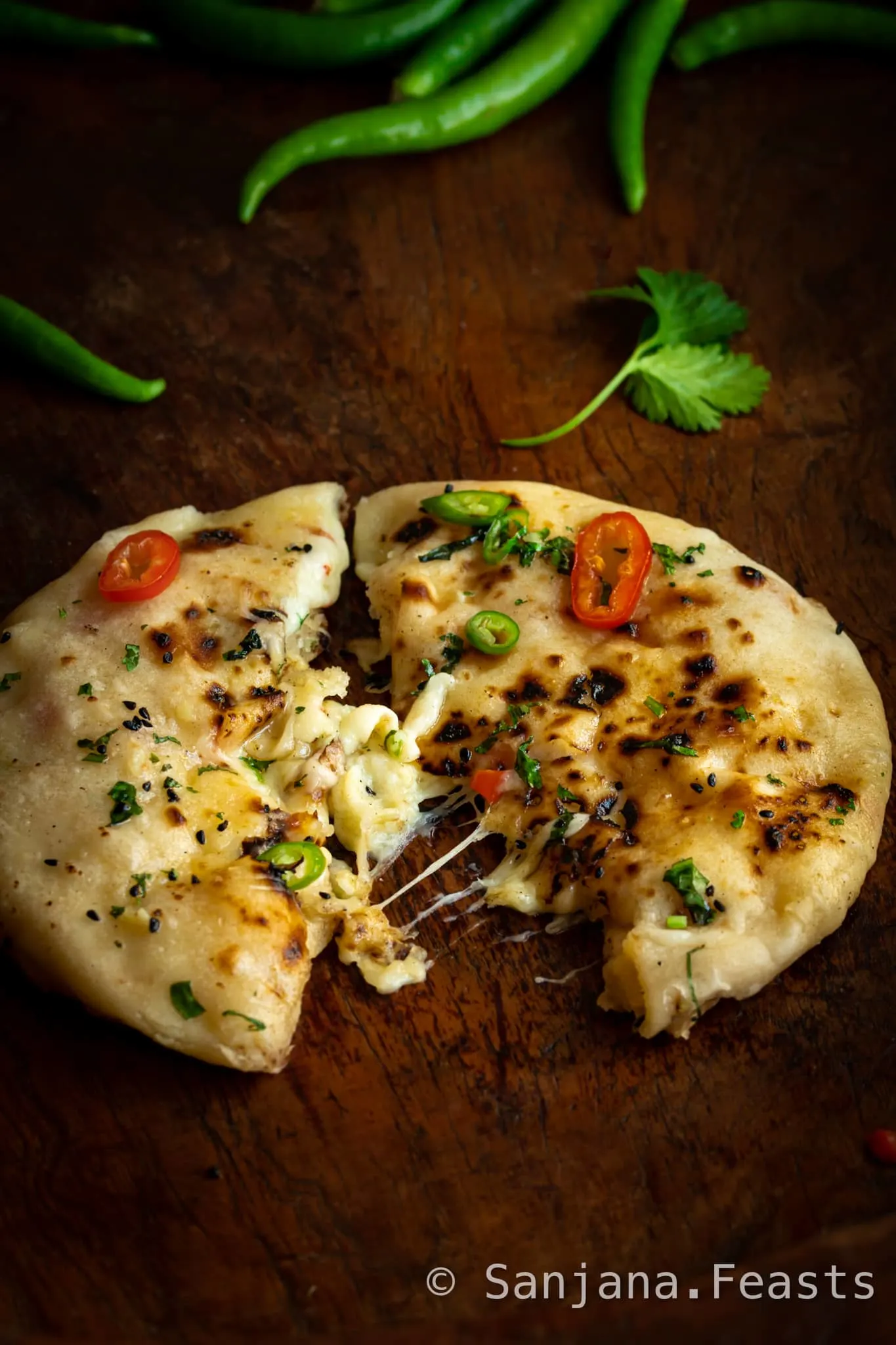What are Thepla?
Thepla are traditionally bound into a soft dough which is then roasted on a hot tawa or frying pan. During the cooking process, the Thepla are brushed with oil to help them achieve a leopard-spotted finish all over the surface. It’s this oil that ensures the Thepla remain soft and delicious for days. You can make Thepla with methi (fenugreek leaves).
Other styles of Soft Gujarati Thepla
Thepla with leftover rice Leftover khichdi Thepla Thepla with millet flour (bajra)
What should I serve Thepla with?
Thepla can be served a number of different ways; the most popular being with masala chai, potato curry (bateta nu shaak) or simply with your favourite chutney and plain yoghurt. As they are a common breakfast or lunch dish, it’s not uncommon to enjoy thepla with sweet masala chai. In Gujarat, these are known as methi na thepla and are traditionally enjoyed with either yoghurt or Keri No Chhundo (sweet and spicy mango pickle).
How to make soft Thepla
The key thing to remember when making Soft Gujarati Thepla at home is that the dough must be soft. Unlike poori making, the Thepla dough needs to be bound with sufficient water and oil. Some cooks also add plain yoghurt (dahi) to the dough for added richness.
Tips for making the softest Gujarati Thepla
I like to use a combination of warm water and warm almond milk to bind my dough. This is not traditional but my way of ensuring my Thepla are super soft and delicious. Using almond milk also means these Thepla are vegan due to the lack of yoghurt used to bind the dough. Another ingredient I like to add to help achieve this is chickpea flour. The chickpea flour gives these Thepla an incredible, nutty flavour.
Where to buy fresh methi (fenugreek) in the UK
I recommend visiting your local fruit and vegetable market. South Asian food shops and greengrocers will certainly have bunches of fresh methi. Many large supermarkets now stock fresh methi in their ethnic produce sections.
How to clean fresh methi
How to freeze fresh methi
Follow all the steps in the how-to above. Ensure the methi leaves are completely dry before packing into a freezer-safe container or bag. Freeze for 6-8 months.
Can I use dried methi to make Thepla?
Of course. However, they will lack the beautiful green-speckled surface achieved when making them with fresh fenugreek leaves. While kasoori methi is fine to use, remember that the flavour is incredibly strong in comparison to fresh methi leaves. Therefore, you will need to use much less. I’d recommend using 1 tbsp dried methi in this recipe, ground finely between your palms. Remove any sharp, dried stalks as they will affect the way the Thepla roll. Reconstitute the methi in 1 tbsp hot water and allow to stand for 5 minutes before adding it to the dough. For a burst of green colour, you can also add a handful of freshly-chopped spinach leaves or fresh coriander leaves. Ensure any leaves are very finely chopped.
Ingredients you’ll need to make Soft Gujarati Thepla
Wholewheat chapati flour (roti atta) Fresh fenugreek leaves Chickpea flour (besan) Garlic Jaggery (gor) or brown sugar Sesame seeds Turmeric Chilli powder Salt Almond milk Water Oil
Soft Gujarati Thepla recipe | methi chapati | methi roti
Pin it for later! Soft Gujarati Thepla
If you like these, you’ll love my Soft Spinach Roti recipe
More delicious Indian bread recipes
Soft Rotli (chapati) recipe
Gujarati-style phulka or rotli are a soft chapati (flatbread) we make daily using wholewheat flour. Toast rotli on a steel, iron or aluminium griddle until it puffs up like a balloon. Grab my best-ever recipe for rotli. Other types of roti: Roomali roti, tandoori roti, khameeri roti, akki roti, besan roti, spinach roti.
Masala Poori recipe
Puffy Masala Poori will forever be a Sunday morning staple. Fried whole wheat flour bread with mild spices, a double layer and hollow middle. The little circles of dough rise before your very eyes for a magical cooking experience — and an even more spectacular eating experience. Here’s my recipe for perfect Masala Poori. Other types of poori: Plain poori, lucchi, puran puri (puran poli).
Aloo Paratha recipe
Crispy, flaky Aloo Paratha (Potato-Stuffed Flatbread) are an emblem of soulful Indian home cooking. Almost every home has their own unique recipe and technique for making this delicious North Indian stuffed flatbread. Here’s my recipe for Aloo Paratha. Other types of paratha: Mooli paratha, laccha paratha, pepper paratha, Malabar paratha, parotta, daal paratha, paneer paratha, keema paratha.
Paneer Kulcha recipe
A cross between naan and paratha. Learn how to make ultra-flaky Amritsari-style Paneer Kulcha with me. These flatbreads are famous in North India for their crispy layers of dough and delicious variety of fillings. I stuff my Kulcha with soft paneer, onions, ginger, chillies and a blend of toasted spices. Get the recipe for Paneer Kulcha here. Other types of kulcha: Aloo kulcha, plain kulcha, matar kulcha, Amritasri kulcha, bread kulcha, cheese kulcha.
Cheese Naan recipe
This puffy, blistered Bullet Cheese Naan has a chilli-cheese stuffing and is the softest, most delicious bread for mopping up curry, daal or even eating with your favourite tandoori dishes. This spicy take on cheesy garlic naan is a must for chilli lovers. Grab my Cheese Naan recipe here. Other types of naan: Garlic naan, chilli naan, chur-chur naan, pudina naan, coriander naan, keema naan, khameeri (yeast) naan, yoghurt naan, Peshawari naan. Love Sanjana Share this recipe


